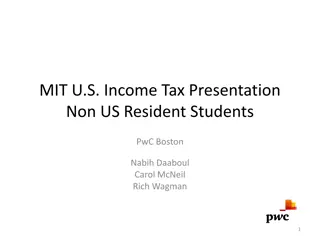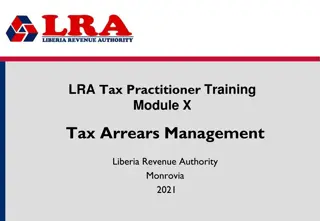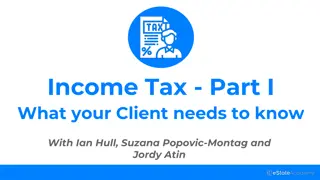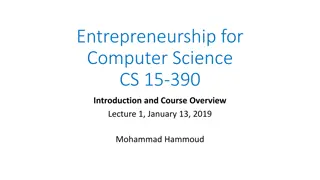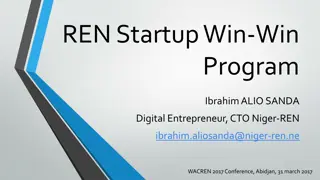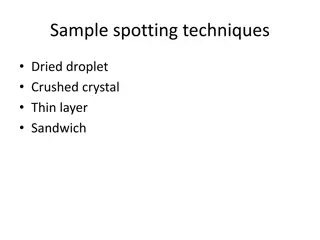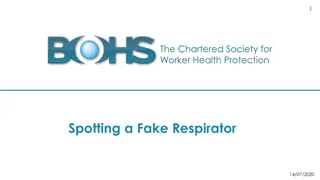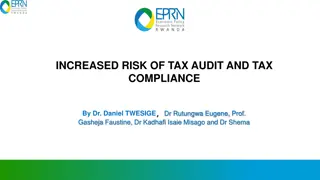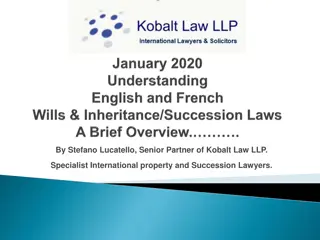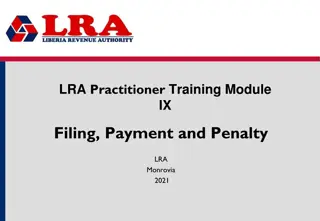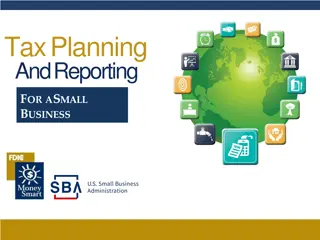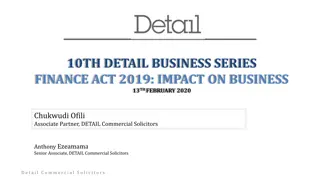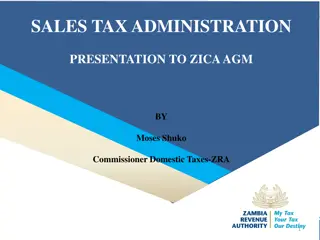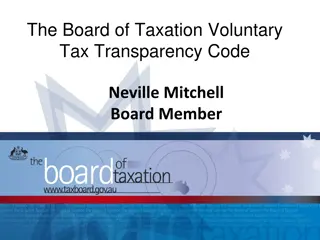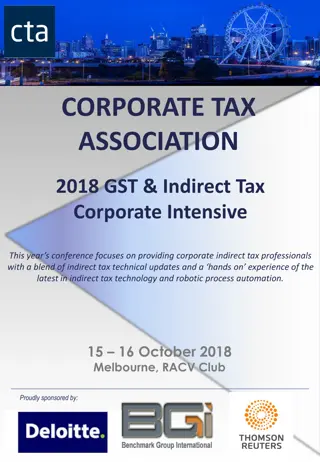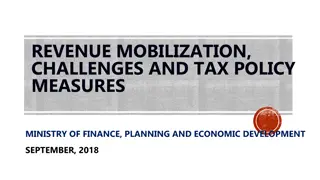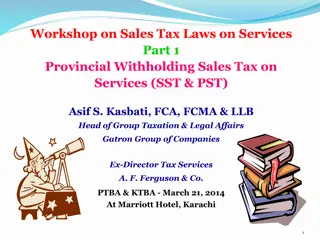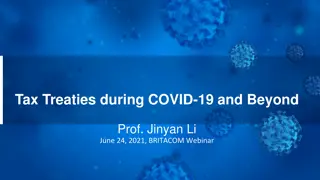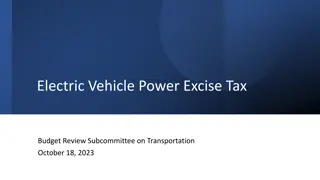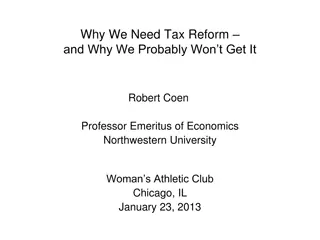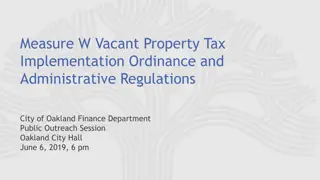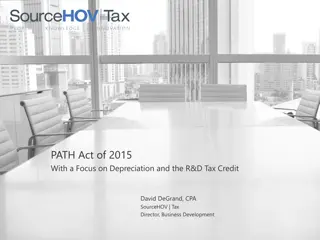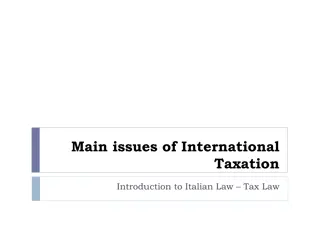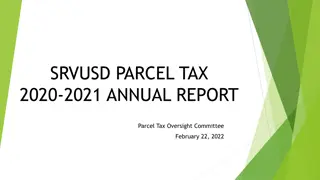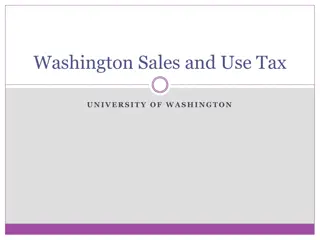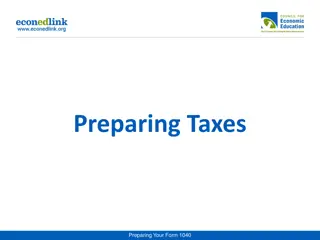Tax Issue Spotting for Startup Entities
Explore the tax implications and considerations associated with different entity types for startups, including proprietorships, partnerships, LLCs, and corporations. Learn about single-member entities, tax differences between LLCs and S-Corps, and examples illustrating tax obligations for different entity structures.
Download Presentation

Please find below an Image/Link to download the presentation.
The content on the website is provided AS IS for your information and personal use only. It may not be sold, licensed, or shared on other websites without obtaining consent from the author. Download presentation by click this link. If you encounter any issues during the download, it is possible that the publisher has removed the file from their server.
E N D
Presentation Transcript
TAX ISSUE SPOTTING DURING THE LIFECYCLE OF A STARTUP Choice of Entity Considerations Third Annual Young Tax Lawyers Conference March 14, 2016
Typesof Entities Proprietorship. One owner (and spouse). All profits and losses reported on Schedule C. General Partnership ( GP ). Two or more co-owners. (Form 1065 and K- 1s). Limited Partnership ( LP ). At least one general partner and one limited partner. (Form 1065 and K-1s). Limited Liability Company ( LLC ). A state chartered entity. (Form 1065 and K-1s). Corporation. Separate entity. (Form 1120). 2 S Corporation ( S Corp ). A pass through entity. (Form 1120S and K-1s).
Single Member Entities Corporation or LLC. Only option since partnership must have at least 2 people. Single Member LLCs. From a formation standpoint, a significant LLC development in California was the adoption of single member LLCs. This change eliminated the requirement of having owners as members to initially form a California LLC. Single Member LLC May Elect to be Taxed as Corporation. A LLC with only one member is treated as an entity disregarded as separate from its owner for income tax purposes (but as a separate entity for purposes of employment tax and certain excise taxes), unless it files Form 8832 and affirmatively elects to be treated as a corporation. Single Member LLCs Generally Use Owners SSN. For federal income tax purposes, a single-member LLC classified as a disregarded entity generally uses the owner s social security number (SSN) or employer identification number (EIN) for all information returns and reporting related to income tax. If a single-member LLC, whose taxable income and loss will be reported by the single member owner, nevertheless needs an EIN to open a bank account or if state tax law requires the single-member LLC to have a federal EIN, then the LLC can apply for and obtain an EIN. Employment and Excise Taxes Require an EIN. LLC will need an EIN if it has any employees or if it will be required to file certain excise tax forms. 3 Husband and Wife. A husband and wife in California who own their 100% LLC membership as community property are classified as a single member LLC and is a disregarded entity for tax purposes
LLC Tax vs. S Corp Tax LLC Tax. Limited partnerships, corporations, S corporations and LLCs must all pay the annual minimum franchise tax of $800. However, the LLC is also subject to an additional fee : Annual Gross Revenue Fee x < $250,000 $0 $250,000 x < $500,000 $900 $500,000 x < $1,000,000 $2,500 $1,000,000 x < $5,000,000 $6,000 $5,000,000 x $11,790 4
LLC Tax vs. S Corp Tax (Cont.) Example #1: LLC Tax: ABC, LLC is owned equally by A, B and C. ABC, LLC owns and operates a restaurant that has gross receipts of $1,500,000 and net income of $250,000. ABC, LLC must pay $800 franchise tax plus a $6,000 additional fee. 5
LLC Tax vs. S Corp Tax (Cont.) Example #2: LLC Tax with LP: ABC, LP is a limited partnership with ABC, LLC owning 1% as general partner, and A, B and C each owning 33% as limited partners. ABC, LP owns and operates a restaurant that has gross receipts of $1,500,000 and net income of $250,000. $15,000 in gross receipts passes through to ABC, LLC, which must then pay $800 franchise tax plus with no additional fee. Note: Having twin entities with identical ownership may adversely impact the ability to avoid piercing the corporate veil. 6
LLC Tax vs. S Corp Tax (Cont.) S Corp Tax. 1.5% net income tax at the entity level with a minimum of $800. Comparison of LLC (Gross Receipts) Tax vs. S Corp (Net Income) Tax. These numbers assume a 20% net profit margin but does not include the $800 franchise tax for LLCs. Gross Sales Net Income LLC Tax S Corp Tax $200,000 $40,000 $0 $800* $350,000 $70,000 $900 $1,050 $700,000 $140,000 $2,500 $2,100 $2,000,000 $400,000 $6,000 $6,000 $6,000,000 $1,200,000 $11,790 $18,000 7
Basis and Loss Limitations to Owners Two Types of Losses. There are two types of possible losses for startups: operational and business failure. Losses Limited to Basis in Entity. The allowability of losses for income tax purposes is limited to the owner s basis in the entity. LLC. Under Section 704(d), a partner may deduct partnership operational losses allocated to him to the extent of his adjusted basis in his partnership interest. The partner s basis includes tax capital contributions and the partner s share of debt under IRC 752. Limited Partnership. Same as LLC. 8
Basis and Loss Limitations to Owners (Cont.) S Corporation. A Shareholder of an S corporation may deduct losses of the corporation to the extent of the shareholder s basis in stock plus any amounts loaned to the corporation by the shareholder. IRC 1366(d)(1). S corporation shareholders do not get a share of the entity s debt for purposes of determining their basis in their stock. In order to take losses on debt by an S corporation, and thereby increase a shareholder s basis in indebtedness, there must be a shareholder loan and the loan must represent the S corporation s bona fide indebtedness. S corporation shareholders generally are not permitted to increase their basis by guarantying a loan made by a third party to the corporation until they actually have to make payments on the guaranty. 9
Basis and Loss Limitations to Owners (Cont.) Example #3: Shareholder s Basis with Shareholder Debt. In exchange for 100% of stock, A contributed $500,000 to form ABC, Inc., an S Corp. A also loaned $450,000 to ABC, Inc. A s stock basis is $500,000 and his debt basis is $450,000. In Year 1, ABC, Inc. has a loss of $750,000 at the end of the first year. A s stock basis is reduced to $0 and his debt basis is reduced to $200,000. 10
Basis and Loss Limitations to Owners (Cont.) Example #4: Shareholder s Basis with Third-Party Debt. In exchange for 100% of stock, A contributed $500,000 to form ABC, Inc., an S Corp. ABC, Inc. also borrowed $450,000 from a third-party which A guaranteed. A s stock basis is $500,000 and his debt basis is $0. In Year 1, ABC, Inc. has a loss of $750,000 at the end of the first year. A s stock basis is reduced to $0. He cannot deduct any portion of the loss in excess of $500,000 because he has no debt basis. 11
Basis and Loss Limitations to Owners (Cont.) Conclusion. If the entity is going to obtain third party debt (rather than owner loans), a LLC or LP with a LLC or S Corp as the GP will be the entity of choice structured as follows: 33-1/3% O1 33-1/3% O2 33-1/3% O3 33-1/3% LP1 33-1/3% LP2 33-1/3% LP3 33-1/3% 33-1/3% 33-1/3% LP1 LP2 LP3 1% S Corp GP 1% LLC GP 33% LP1 33% LP2 33% LP3 33% LP1 33% LP2 33% LP3 LLC LP LP 12
Entity Conversion Conversion of LLC to Corporation. The LLC contributes all of its assets and liabilities to a newly formed corporation in exchange for its stock. A deemed distribution of the stock is then made to the members in complete liquidation of the LLC (tax-free contribution under IRC 351), and therefore the transaction itself generally results in no gain/loss. However, a LLC may be taxed if the aggregate liabilities assumed by the new corporation exceed the aggregate tax basis of the assets contributed. 13
Entity Conversion (Cont.) Conversion of C Corp to LLC. Statutory Conversion. Allows you to convert the corporation to an LLC by filing a few forms with the Secretary of State s office. Tax Consequences. Deemed liquidation of the corporation, followed by a deemed liquidating distribution of the net proceeds from the deemed asset sales to the shareholders. Converting to LLC taxed as Corporation. Does not have the same degree of adverse tax consequences as when converting to an LLC taxed as a partnership. But it does not change the basic elements of how business will be taxed going forward, so you should investigate closely how it would benefit the business. 14
Entity Conversion (Cont.) Conversion from C Corporation to S Corporation. Built-In Gains. 15
Built-In Gain and Built-In Loss Rules Partnerships or LLCs. Built-in Gains. Any built-in gain inherent in property at the time of its contribution to a partnership or at the time of its revaluation must be allocated to the Contributing Partner (or partners whose capital accounts are increased in the revaluation) when the built-in gain is recognized. IRC 704(c). Built-in Losses. If contributed property has a built-in loss, then (1) the built-in loss is to be taken into account only in determining the amount of items allocated to the contributing partner, and (2) in determining the amount of items allocated to other partners, the partnership s basis in the contributed property is treated as being the fair market value of the property at the time of contribution. IRC 704(c)(1)(C). 16
Built-In Gain and Built-In Loss Rules (Cont.) S Corp. A sale of assets by an S corporation that used to be a C corporation during the recognitionperiod is subject to a built-in-gains tax. A built-in- gain tax is imposed on the corporation, at the highest corporate tax rate, on the appreciation in asset value that existed on the date the corporation became an S corporation. The shareholders may then be subject to a second tax on distribution of the sales proceeds. This double tax created by imposition of the built-in gain rules can be eliminated if the corporation holds and sells assets only after the recognition period has expired. Generally, the recognition period is 10 years but through 2013 it was 5 years. IRC 1374(d)(7). That means assets sold in 2013 that were held at least 5 years did not trigger built-in gains tax under IRC 1374. 17
Built-In Gain and Built-In Loss Rules (Cont.) Example #5: Asset Sale in 2013. ABC, Inc. was incorporated as a C Corporation. ABC, Inc. timely filed an election to be treated as an S Corporation as of 1/1/08. On the date of conversion, ABC, Inc. had land with a cost basis of $150,000 and a Fair Market Value of $550,000. In April 2013, ABC, Inc. sold the land for $700,000. There is no built-in-gain on the sale of the land because the property was sold after the 5-year recognition period ended on 12/31/12, so ABC, Inc. recognizes a capital gain of $550,000. 18
Built-In Gain and Built-In Loss Rules (Cont.) Example #6: Asset Sale in 2014. ABC, Inc. was incorporated as a C Corporation. ABC, Inc. timely filed an election to be treated as an S Corporation as of 1/1/08. On the date of conversion, ABC, Inc. had land with a cost basis of $150,000 and a Fair Market Value of $550,000. In April 2014, ABC, Inc. sold the land for $700,000. There is a built-in gain on the sale of the land because the property was sold before the 10-year recognition period ended on 12/31/18. 19
Startups Mid-Life Issues Typical Activities: Granting equity compensation Raising capital (debt or preferred stock) Growing the business Repurchases to get Founders / employees early liquidity Tax objectives: Avoiding non-cash taxable events (i.e., no phantom income) Optimizing shareholders tax treatment on exit 20
Common Forms of Equity Compensation Founders stock Stock options Incentive stock options (Sections 421 to 424) (i.e., ISOs) Non-statutory stock options (NSOs) Profits interests for LLCs (rare for Silicon Valley) Equity-linked payments (RSUs, SARs, management carve-out plans ) 21
Founders Stock Issues - Example B A C 20% 10% 40% VC Financing NewCo Preferred Stock 30% A, B, and C receive common shares as core members of the team (i.e., Founders) Shares are subject to vesting. 22 Vesting may be imposed initially or in connection with VC financing.
Compensation Tax Issues Founders Stock Vesting conditions cause restricted stock to be subject to rules of Section 83: Section 83(a) default rule causes taxable events as shares vest (based on spread on vesting) Section 83(b) employees must elect within 30 days of stock issuance to become tax owner of restricted shares. Employee is taxed only on spread on issuance (if any). Rev. Rul. 2007-49 discusses three scenarios for later imposition of vesting restrictions in connection with (a) financing, (b) tax-free exchange of shares, or (c) taxable exchange of shares. 23
Compensation Tax Issues Options Stock options generally defer tax consequences to the employee until exercise or cash-out of the option. Stock options that meet several requirements in Sections 421-424 qualify for special treatment as incentive stock options (ISOs): No payroll tax if exercised prior to sale Receipt of stock is exempt from regular tax (but subject to AMT) if certain holding periods are met Paramount tax consideration in option plans is compliance with IRC Section 409A. 24
Capital Raising Common Forms Traditional VC Preferred Stock. Convertible or exchangeable debt (a.k.a., seed notes or bridge notes) Simple Agreement for Future Equity (S.A.F.E.) 25
Shareholder Benefits for Qualified Small Business Stock (QSBS) Investors (or founders) commonly desire to get QSBS treatment for investments in start-ups. Section 1202 allows complete (100%) exclusion of eligible gain from Federal income tax for investments in QSBS made after Sept. 27, 2010 that are held for 5 years. The PATH Act recently made the 100% exclusion permanent. Section 1045 allows taxpayer to do a tax-free rollover of gain from sale of QSBS into new QSBS purchased within 60 days of the sale. 26
Section 1202 Requirements Company must be a C corporation engaged in an active business, other than certain excluded fields (e.g., professional services, hotels / restaurants, banking). Stock must be acquired at original issuance from the company. Company must have $50 mm or less of gross assets immediately after the issuance of stock Company must meet an active business test and not have excessive passive assets throughout the shareholder s holding period. 27
Restrictions on Redemptions QSBS treatment may be disqualified if Company makes significant redemptions in certain window periods around the investment. See Reg. 1.1202-2. Significant redemptions from any shareholder within 1 year before or after the stock issuance (i.e., a 2-year period) will disqualify all stock issued from being QSBS. Meaningful redemptions from the specific shareholder within 2 years before or after the stock issuance (i.e., a 4-year period) will cause stock issued to that shareholder to lose QSBS benefits. 28
Founder Liquidity / Secondary Transactions Old Preferred Shareholders Common Shareholders New Investors $10 mm $20 million Company Company raises money from VC or other investors and wants to provide some liquidity to founders / employee shareholders. 29
Alternative Transactional Forms for Secondary Transactions Investors invest in preferred and Company redeems employee stock Investors buy common stock from employees and Company then recapitalizes investors into new preferred Investors buy stock from employees and hold common stock Occasionally, more exotic transactions are seen e.g., a so-called Waverly loan to allow Founder to defer recognizing gain. 30
Secondary Transactions Tax Issues Characterization of the payment: Capital gain vs. ordinary income Dividend vs. sale or exchange under IRC Section 302 Treatment of employee option holders and ISO shares Impact on QSBS is there a significant redemption? 31
Exit Plan 32
Positive Outcome: IPO and Sale Due Diligence Tax Issue Examples: Intercompany Agreements State Nexus Foreign Transactions Accounting Methods Used and Changes IRS Letters/Rulings Tax Basis of Assets by State 33
Sale: Stock and Asset Sale Stock Sale Usually more beneficial to the seller 338(h): Certain Stock Purchases Treated as Asset Acquisitions Asset Sale Usually more beneficial to the buyer Planning is Necessary! Future Existence of the Entity? Profit From Sale: 382/383 Limitation 34
382/383 Limitation Limitation on the use of NOL carryovers and credits (ex: foreign, R&D) if there is ownership change. The NOLs will be limited if the positive sum of the change is over 50% in a 3 year lookback period for shareholders who own over 5%. Ownership % is calculated by % of value owned. 35
382/383 Limitation Continued The limitation is calculated by the value of the company times the percent per the IRS tables in the month of ownership change. Accurate cap tables are NECESSARY 36
Other Asset Sale/Entity Closure Issues Sales Tax Final Returns/Closure of State Registrations Liquidation of the Entity/Liquidating Dividends Prior year amendments for credits that could be taken 37
Liquidation and Bankruptcy Solvent vs. Insolvent Tax returns are still filed in Bankruptcy NOLs/Profits Sale of Assets Shareholder Notes 38
Overall Message BE ORGANIZED Plan ahead with your client and work closely with their tax advisor Tie up loose ends before starting on the exit plan 39
Thank you! Aaron Johnson Wagner Kirkman Blaine Klomparens & Youmans, LLP www.wkblaw.com ajohnson@wkblaw.com Office: (916) 920-5286 Fax: (916) 920-5286 William Skinner Fenwick & West, LLP www.fenwick.com/pages/san-francisco wrskinner@fenwick.com Office: (415) 875-2300 Fax: (415) 281-1350 Noriko Hyden Burr Pilger Mayer, Inc. www.bpmcpa.com NHyden@bpmcpa.com Office: (415) 677-4585 | Fax: (415) 288-6288 40
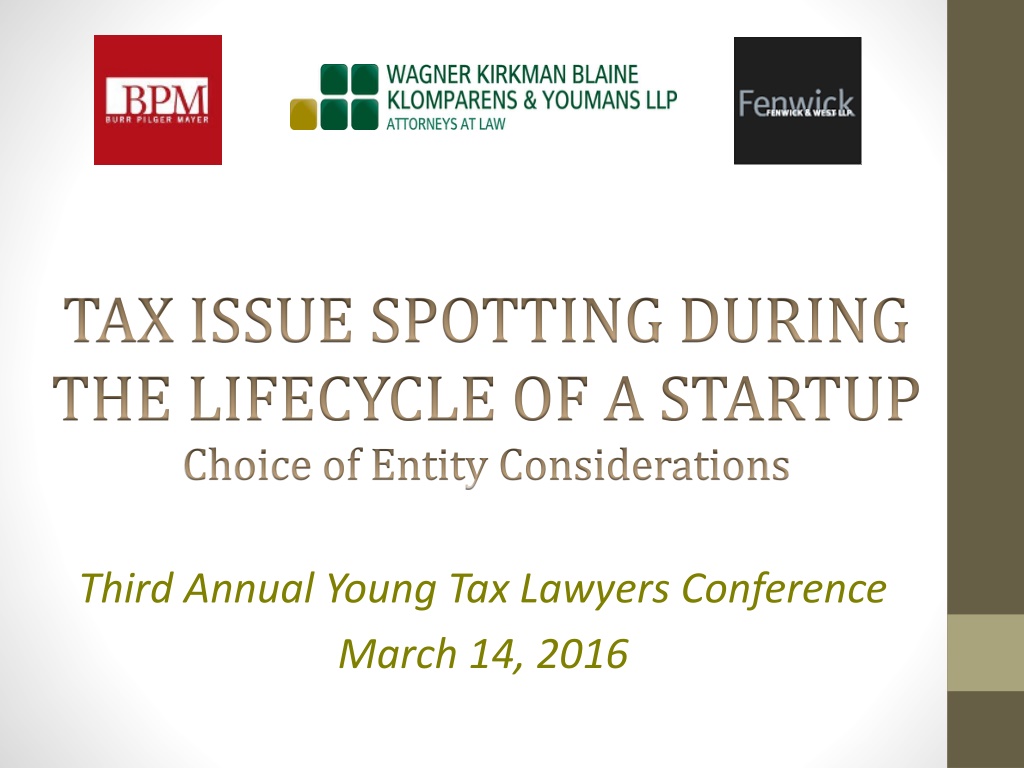


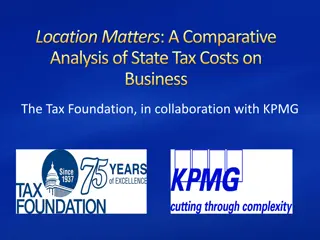
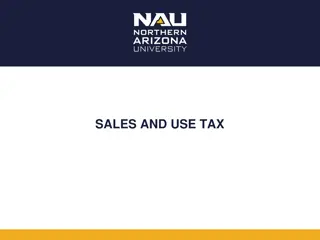


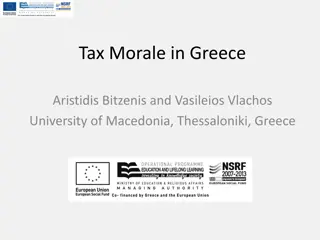
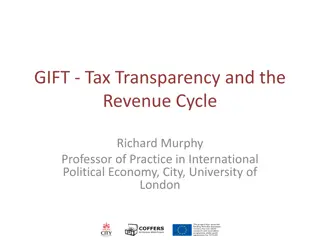
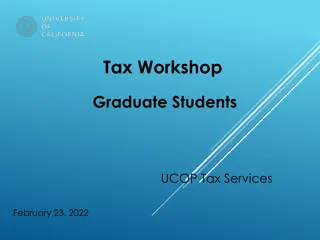
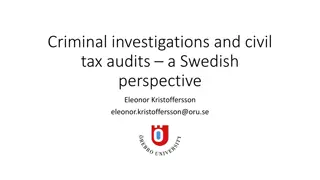
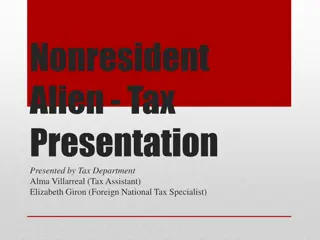
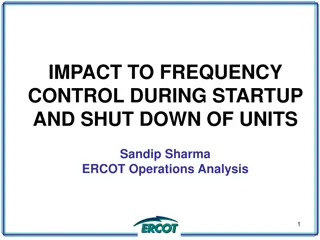

![Town of [Town Name] Real Estate Tax Rates and FY 2024 Budget Summary](/thumb/62211/town-of-town-name-real-estate-tax-rates-and-fy-2024-budget-summary.jpg)


